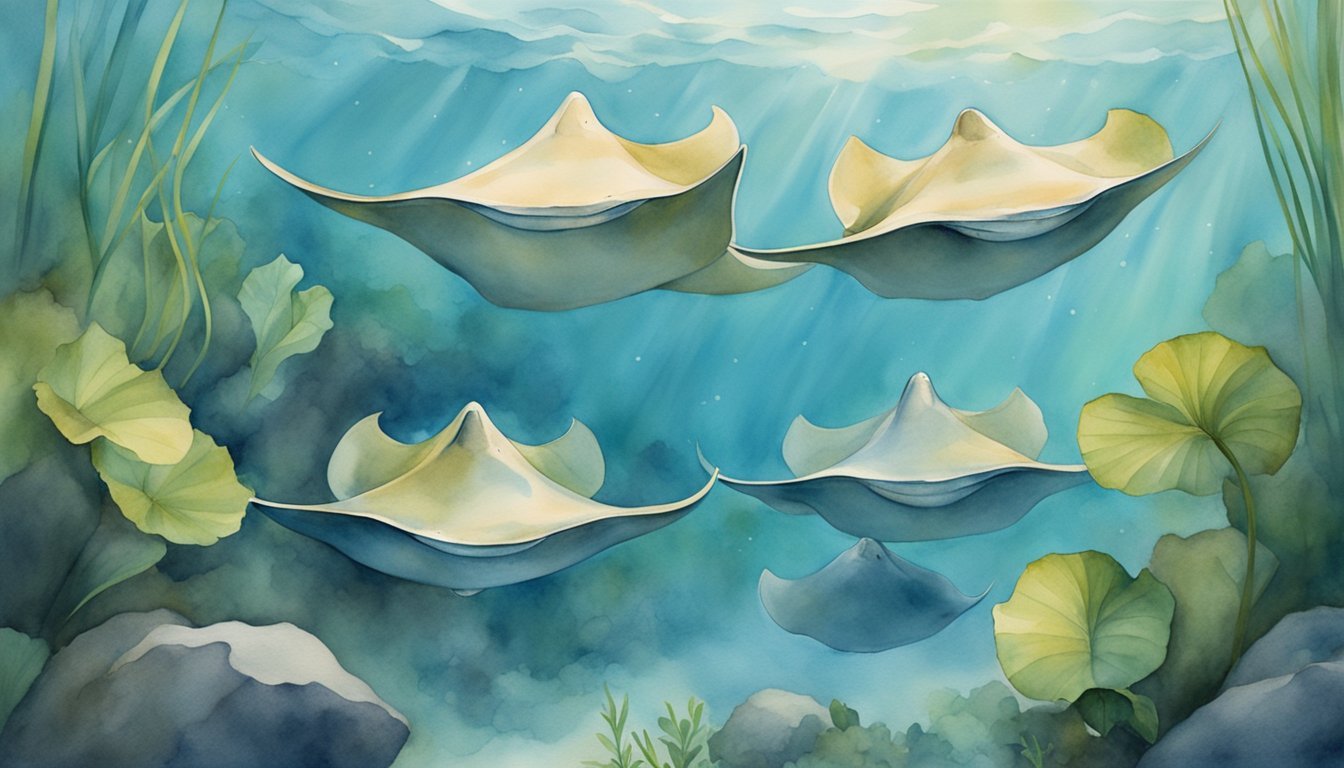Biology and Species of Freshwater Stingrays

Exploring the world of freshwater stingrays provides insight into their unique physical features, diverse species, and intricate behaviors. These fascinating creatures inhabit freshwater environments and display a range of adaptations for their survival.
Physical Characteristics
Freshwater stingrays, belonging to the family Potamotrygonidae, are known for their distinctive flat bodies and long, slender tails. The giant freshwater stingray, Urogymnus polylepis, can grow up to 2.2 meters across and weigh as much as 600 kilograms, making it one of the largest freshwater fish. Their tails, equipped with one or more barbed stingers, are a defense mechanism and can inflict serious wounds. Unlike their marine relatives, the body of freshwater stingrays is often more rounded, and they have well-developed pectoral fins that aid in their movement through the water.
Diverse Species and Their Habitats
There is a rich diversity among freshwater stingray species, each adapted to specific habitats. The motoro stingray, Potamotrygon motoro, is commonly found in the rivers of South America, while species like the pearl stingray and the ocellate river stingray, Potamotrygon henlei, inhabit different regions within the Amazon basin. The freshwater stingrays of Asia, particularly in Southeast Asia, showcase the geographical expansion and adaptability of these animals. They reside mostly in the muddy bottoms of rivers where the water is warm and relatively slow-moving.
Diet and Feeding Habits
Primarily carnivorous, freshwater stingrays feed on a variety of prey including worms, clams, and small fish. Their diet reflects the abundance of the benthic organisms in their environment. They employ a “lie in wait” strategy: the stingrays partially bury themselves in the substrate of their natural habitats and ambush unsuspecting prey, using their mouths to create a suction to draw it in. Freshwater stingrays have strong jaws that allow them to crush the shells of clams and crabs, which are commonly found in their diet. Their feeding habits and role as predators are important in maintaining the ecological balance in their freshwater ecosystems.
Human Interaction and Conservation

The relationship between humans and freshwater stingrays is multifaceted, involving aspects like the aquarium trade and the need for conservation. Both the trade and scientific communities pay close attention to the species’ survival given increasing environmental pressures.
Aquaculture and Trade
Freshwater stingrays, like the Potamotrygon motoro and Potamotrygon henlei, are sought after for aquaculture and the tank hobbyist trade, particularly in countries such as Thailand, South America, and Australia. These stingrays require specific conditions, including large tanks with ample space to roam and a filtration system robust enough to handle their waste. The freshwater stingray tank should mimic their natural habitat, including substrate matching their environment and water conditions that reflect their native conditions. The care for these species is complex, given their size and the potential for the stingers and spines to cause injuries to tank mates. Moreover, maintaining the proper temperature and water parameters is vital as they are susceptible to bacterial infections if kept in poor conditions. Species such as the Potamotrygon leopoldi, widely known as the black diamond stingray, have distinct white spots and command higher prices among enthusiasts.
Conservation Efforts and Environmental Challenges
The conservation status of many stingray species reflects growing concerns. Pollution and habitat destruction, notably in vital waterways like the Mekong River, have put pressure on freshwater stingrays. Some species, such as the ocellate river stingray or Potamotrygon motoro, find themselves in declining numbers, edging them closer to being endangered. Public aquariums and research facilities are crucial for conservation efforts, providing safe havens and breeding grounds for species like the pearl stingray and the black diamond stingray, while educating the public about the role of stingrays in their ecosystems. Conservation organizations and local governments often face the challenge of managing fishing and trade to prevent overexploitation. Environmental challenges such as the release of toxins and the construction of dams disrupt not only the freshwater stingrays’ natural habitat but also their very survival, necessitating thorough and robust conservation strategies.
Here is additional information about the status and challenges in the conservation of freshwater stingrays. More details on how human interactions, such as feeding and behavior changes, impact stingrays can be found here. Conservation and research by entities like the Guy Harvey Research Institute highlight the complexities and importance of maintaining a balance between human activity and the well-being of stingray populations.

